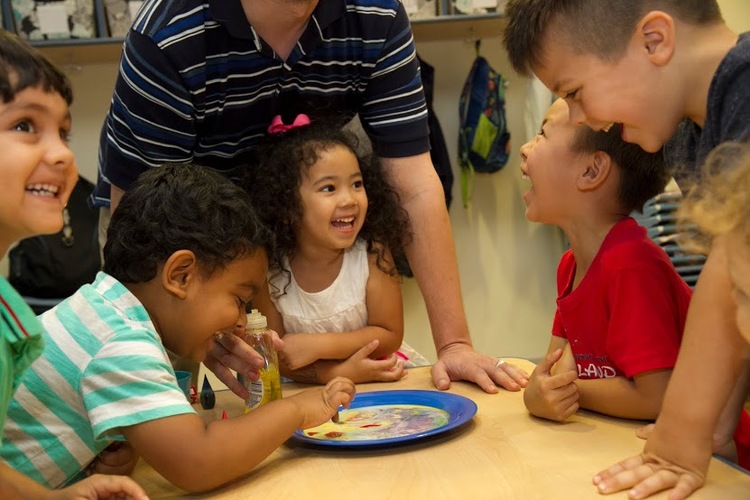Socialization becomes the platform for play and learning in preschool.
Children learn how to navigate their future interpersonal relationships from their social interactions in early childhood; providing a social atmosphere for toddlers and two-year-olds when their language and motor skills are blossoming more than ever makes all the difference.
When children play together, they learn to celebrate differences as they cooperate and collaborate - creating empathetic problem solvers. When a child’s play is guided and encouraged by their teacher, the child establishes trust, respect & confidence – essential to a lifelong love of learning.
Children start learning to recognize and manage their feelings in toddlerhood, and their emotional awareness evolves immensely from their second to fifth year. During these years, we watch as children's emotions transform from immediate and instinctual responses where they can go from happy to frustrated in a split second, to being more self-aware and calculated. Toddlers and twos begin to understand rules and will often test limits to see what behavior is acceptable. Preschoolers and prekindergarteners begin to incorporate their social and emotional fortitude with their sense of reason as they assess how their emotions affect their decision making. Emotional development prior to the age of three will significantly impact the way that children approach decision making and conflict resolution for the rest of their lives. Sonnets Academy's dedication to whole-child development places emphasis on guiding emotional learning in constructive and positive ways to instill confidence.

Providing a constructive social environment in early childhood allows emotional development to expand to its fullest potential; a classroom environment provides opportunities for social and emotional learning that cannot result from just one-on-one interactions. Toddlers engage in parallel play before advancing to collaborative play and finally interactive play. During parallel play the children sit side by side and play with different toys. During collaborative play the children may trade a toy between them and are more interested in the giving and taking of the toy then interacting with their friend. During interactive play the children are actually playing together. Toddlers and twos are capable of forming genuine friendships and will have a preference for whom they play with.



